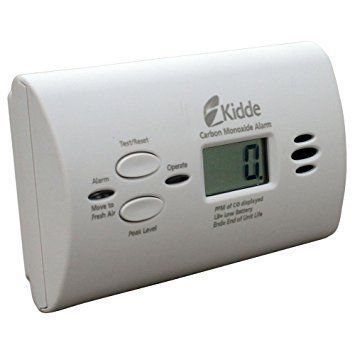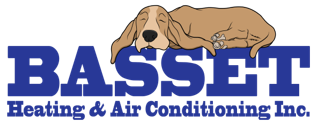MON–FRI: 8AM–7PM
24/7 EMERGENCY SERVICE:
The online booking feature is no longer available. Please call our office for any scheduling needs. Sorry for the inconvenience.
MON–FRI: 8AM–7PM
24/7 EMERGENCY SERVICE:
The online booking feature is no longer available. Please call our office for any scheduling needs. Sorry for the inconvenience.

There is a common myth about furnaces & carbon monoxide leaks. And that myth is that a furnace with a cracked heat exchanger will leak carbon monoxide into your home and potentially kill everyone inside the home.
Can it happen? Yes. Will it happen? Not likely.
Make no mistake about it. Carbon monoxide can be a deadly and silent killer. Most homes in the Colorado Springs area are heated with natural gas furnaces or boilers. Furnaces & carbon monoxide are related, as are any fuel burning appliances. When fuel is burned, carbon monoxide is produced during the combustion process. Carbon monoxide affects everyone, with unborn children, infants, young children, seniors and those with respiratory problems most at risk.
https://www.extension.iastate.edu/Pages/communications/CO/co1.html
A cracked heat exchanger in a gas furnace is certainly a cause for concern. Furnaces & carbon monoxide leaks are like conjoined twins; one cannot live without the other. But will a cracked heat exchanger necessarily leak this deadly gas into your home? http://www.contractingbusiness.com/archive/carbon-monoxide-lets-stop-madness It is true that under the right conditions that a cracked furnace heat exchanger could leak carbon monoxide into the home. But this is far less common than most believe. Every furnace, unless it is achieving 100% complete combustion, will produce carbon monoxide. So what are the more common causes of carbon monoxide poisonings in homes?
Carbon monoxide (CO) poisoning usually occurs due to venting issues or back drafting of the flue gas into the home. Furnaces & carbon monoxide leaks are often linked together, but CO can also be produced by gas water heaters, stoves, fireplaces (gas log and wood burning) generators or any other fuel burning device. An improperly installed or connected flue vent, or one that is rusted through, can allow CO to leak into the home. Back drafts can occur during high winds, or when a vent is not properly pitched. Dirty or plugged gas appliances can also cause CO gas to back up into the home, where the furnace’s blower can pull this deadly gas into the duct work and distribute it throughout the home.
This is why it is so important to have all of your home’s gas fueled appliances serviced and inspected yearly by a competent and licensed HVAC contractor. Most CO poisonings caused by a gas fired furnace are the result of poorly maintained and neglected furnaces, not due to a cracked heat exchanger. And this is even more common in older furnaces that have a standing pilot light and are vented by gravity. If the heat exchanger is plugged, even partially, the flue gases can easily back up into the home and the results could be catastrophic!
Modern furnaces use combustion blowers that are connected to pressure sensing safety switches that should shut off the furnace in the event of a plugged vent where older furnaces (those with pilot lights for example) commonly do not have this added safety feature. But even new furnaces can leak CO from an improperly installed or poorly connected vent.
It is extremely important, if your home has a wood burning stove or fireplace, to crack open a window and allow fresh air into the home for combustion air whenever burning wood in the stove or fireplace. Wood burning stoves and fireplaces consume a lot of oxygen, and if the flames cannot get enough air to burn, it will pull the combustion air needed right through and down the chimney, creating a serious back drafting of CO into the home. http://www.thechimneysweep.ca/2stackeffect.html Every home should have at least one carbon monoxide detector on each level of the home. And they should be tested at least once a year. Most CO detectors should be replaced every five years. It is a small price to pay to protect you and your family’s lives.
For more information about furnaces & carbon monoxide leaks, read a prior article we wrote about furnaces with pilot lights https://bassetheating.com/furnace-pilot-lights/
If you have any questions regarding your home’s carbon monoxide safety, feel free to email us a bassetheating@msn.com or contact us using this form [ gravity form id=”8″ title=”true” description=”true”]
Share this:
SPECIAL ONLINE OFFER
REQUEST AN ESTIMATE
New Appointment
Fields marked with an * are required
Contact Us
We will get back to you as soon as possible.
Please try again later.








